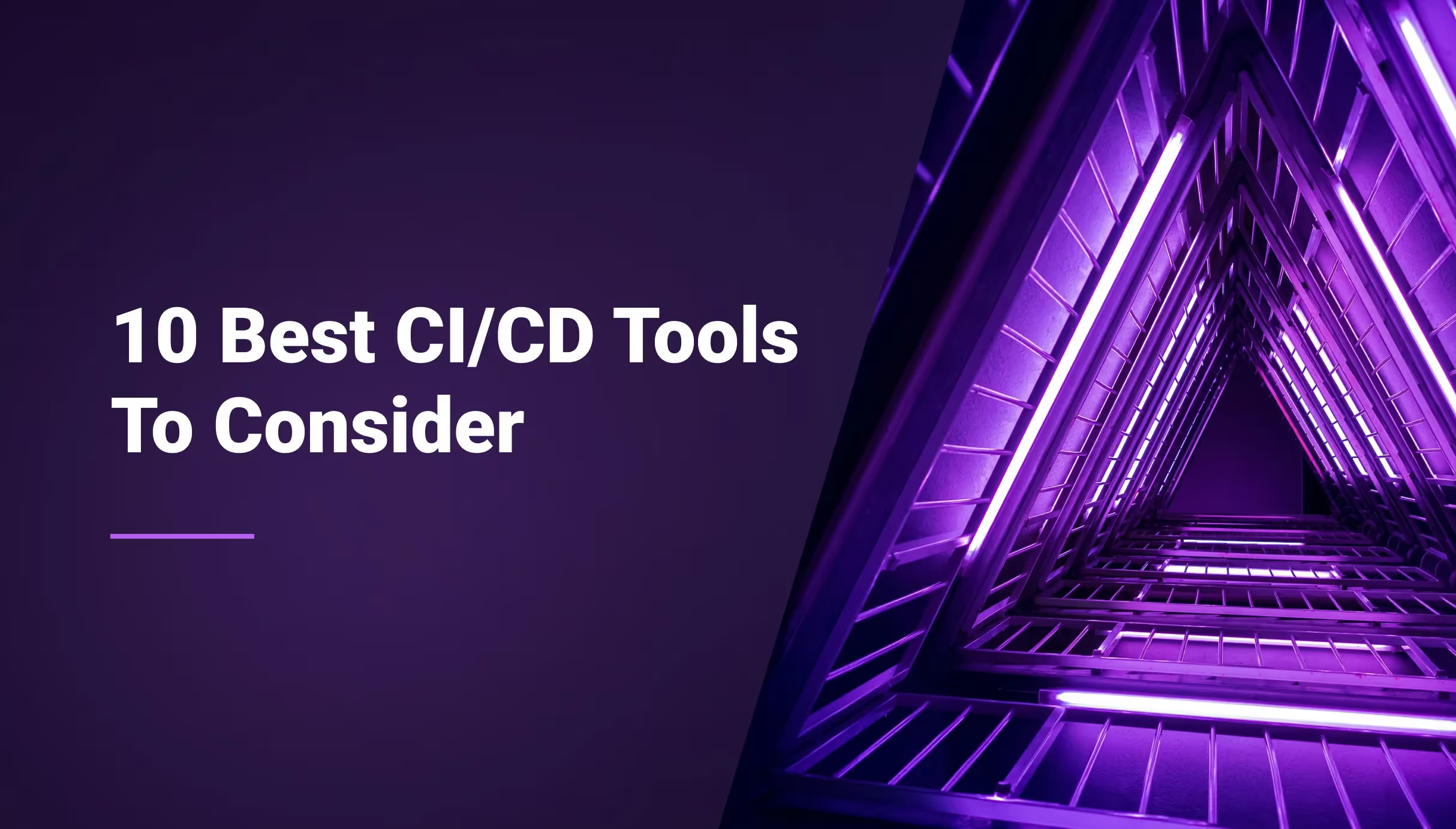

Top 10 DevOps Automation Tools to Streamline Mid-Market Infrastructure



Key Points:
- The Shift to Robust Automation: As organizations move away from traditional PaaS platforms like Heroku, 89% are embracing cloud-native tooling to drive agility. DevOps automation has become essential for reducing operational overhead, minimizing manual tasks, and enabling seamless infrastructure scaling.
- Top Tools & Evaluation Criteria: The article reviews 10 leading tools - including Terraform (IaC), GitHub Actions (CI/CD), and Datadog (Monitoring) - and advises selecting tools based on critical factors such as scalability, security, integration capabilities, and ease of use for the entire team.
- Qovery as a Unified Solution: Qovery is highlighted as the leading all-in-one platform because it bridges the gap between simplicity and control. It abstracts Kubernetes complexity to provide a "Heroku-like" experience directly on your own cloud (AWS, GCP, Azure), eliminating the need to stitch together multiple disparate tools.
The Essential Role of DevOps Automation
DevOps automation isn't just a trend; it's a necessity for competitive organizations. Reflecting a significant industry shift, the CNCF's 2024 Cloud Native Survey indicates that 89% of surveyed organizations now embrace cloud-native tooling, making automation the essential backbone of modern software delivery.
Benefits of DevOps Automation
DevOps automation is delivering significant benefits, enabling teams to deploy code faster and scale infrastructure seamlessly. They also drastically reduce operational overhead by minimizing manual tasks and freeing up time for innovation.
Evolving Landscape: Shift from Traditional PaaS
The escalating demand for agility and reliability is accelerating a move away from traditional PaaS platforms like Heroku. Organizations are now favouring more robust, customizable solutions that offer greater flexibility and control.
This article dives into the top 10 DevOps automation tools redefining software operations in. Each brings unique capabilities in CI/CD, monitoring, security, or environment orchestration.
Factors to Consider When Choosing a DevOps Automation Tool
When selecting the ideal DevOps automation tool, a rigorous evaluation process is paramount to ensure the chosen solution aligns perfectly with your organizational needs and objectives.
Evaluation Criteria
Each tool was evaluated based on:
- Ease of use - A tool that is easy to adopt and use by a wide range of team members, from developers to operations specialists, can significantly accelerate its implementation and maximize its benefits. This includes clear documentation and user-friendly dashboards.
- Integration capabilities - The ability of an automation tool to seamlessly integrate with existing systems, services, and other components of the DevOps toolchain is crucial. This includes version control systems, monitoring solutions, cloud providers, and other CI/CD tools.
- Scalability - This involves assessing its capacity to manage a growing number of resources, handle increasing workloads, and support expanding teams without compromising performance or introducing significant operational complexities.
- Cost-effectiveness - A cost-effective solution provides a strong return on investment by optimizing resource utilization and reducing manual labor.
- Security - Given the critical nature of infrastructure, the security features of an automation tool are non-negotiable. This involves evaluating its capabilities for access control, secret management, compliance enforcement, vulnerability scanning, and audit logging.
- Community and ecosystem support - For proprietary tools, strong vendor support, comprehensive documentation, and a thriving partner ecosystem indicate reliability and a commitment to ongoing development, ensuring long-term viability and assistance when issues arise.
Top 10 DevOps Automation Tools
1. Qovery – The All-in-One DevOps Automation Platform
Qovery is a powerful DevOps automation tool that bridges the gap between ease of use and deep infrastructure control. Designed for developers and engineering teams, Qovery automates application deployment, scaling, and environment management on any cloud provider like AWS, GCP or Azure. It offers seamless auto-scaling, native CI/CD integrations, and one-click preview environments - all through a clean, intuitive interface.
Key Functions:
- Application deployment
- Auto-scaling
- Environment management
- Preview environments
- CI/CD integrations
Why it's Notable:
Qovery abstracts Kubernetes complexity, making it highly accessible for developers without deep container orchestration knowledge. It offers multi-cloud deployment from a single dashboard and includes features like cost optimization (e.g., via Karpenter integration).
It's a particularly attractive DevOps automation solution for organizations migrating from platforms like Heroku seeking more flexibility and control over their infrastructure without heavy DevOps investment.
2. GitHub Actions
GitHub Actions provides native automation workflows directly within your GitHub repositories, making it a popular choice for teams already embedded in the GitHub ecosystem.
Key Functions: CI/CD, test automation, deployment scripting, workflow orchestration, GitOps.
Why it's Great: Its deep integration with GitHub streamlines development workflows. A vast marketplace of pre-built actions accelerates automation setup. It's excellent for rapid prototyping and continuous delivery within a GitHub-centric environment.
Considerations: For highly complex or multi-repository workflows, management can become challenging. While versatile, extensive cross-cloud infrastructure provisioning might require integration with dedicated IaC tools.
3. GitLab CI/CD
GitLab offers a comprehensive, integrated DevOps platform, allowing teams to manage source code, CI/CD pipelines, and deployments all within a single interface.
Key Functions: CI/CD, version control, release management, security scanning, vulnerability management.
Why it's Great: Its "single application for the entire DevOps lifecycle" approach reduces toolchain and cloud sprawl and simplifies collaboration. It boasts strong pipeline management features and extensive enterprise support, especially for self-hosted solutions.
Considerations: Its all-encompassing nature can lead to a steeper learning curve initially. While it supports multi-cloud, deeper multi-cloud orchestration for complex infrastructure might still benefit from dedicated IaC tools.
4. Terraform
Terraform by HashiCorp remains the undisputed leader in Infrastructure-as-Code (IaC), enabling teams to provision, modify, and manage cloud and on-premises resources using declarative configuration files.
Key Functions: Cloud infrastructure provisioning, IaC, multi-cloud management, immutable infrastructure.
Why it's Great: It's cloud-agnostic, supporting a vast array of providers, and boasts a rich, mature ecosystem with extensive community support. It allows for consistent, repeatable infrastructure deployments, crucial for GitOps.
Considerations: Managing Terraform state and secrets effectively requires additional tools and disciplined practices. The learning curve for complex modules can be significant for newcomers.
5. Ansible
Ansible is a powerful, agentless configuration management and application deployment tool known for its simplicity, using human-readable YAML-based playbooks.
Key Functions: Configuration automation, provisioning, software installation, orchestration, security automation.
Why it's Great: Its agentless nature simplifies setup and management. It's easy to learn for automating repetitive infrastructure tasks and application deployments across various environments.
Considerations: While great for configuration management, it's generally less suited for pure infrastructure provisioning compared to Terraform or Pulumi. Larger, highly dynamic environments might benefit from a more orchestrator-centric approach
6. Argo CD
Argo CD is a Kubernetes-native GitOps continuous delivery tool that uses Git repositories as the source of truth for defining the desired state of applications and infrastructure.
Key Functions: GitOps-based deployment, Kubernetes application management, automated synchronization.
Why it's Great: Ideal for teams with a mature Kubernetes setup, it enforces declarative configuration and provides robust drift detection and automated synchronization. It enhances collaboration and auditability by making Git the central hub for deployments.
Considerations: Requires a commitment to GitOps principles and a foundational understanding of Kubernetes. It's focused solely on continuous delivery within Kubernetes environments.
7. Datadog
Datadog provides a unified platform for comprehensive monitoring, logging, and Application Performance Monitoring (APM), giving teams a holistic view of their system health.
Key Functions: Infrastructure monitoring, log management, APM, incident detection, synthetic monitoring, security monitoring.
Why it's Great: Offers deep visibility across the entire stack, from infrastructure to applications, with extensive integrations and powerful dashboards. Crucial for observability in complex microservices architectures.
Considerations: Can become significantly costly at scale, especially with extensive log ingestion and high-cardinality metrics. Requires careful planning of data retention and indexing.
8. Pulumi
Pulumi is an Infrastructure-as-Code (IaC) tool that allows developers to define and manage cloud infrastructure using familiar programming languages like Python, TypeScript, Go, and C#.
Key Functions: Multi-cloud infrastructure provisioning, IaC, policy-as-code, component reusability.
Why it's Great: Appeals to developers who prefer coding over declarative configuration languages, leveraging existing programming skills for infrastructure. It enables advanced logic and testing for infrastructure code.
Considerations: While growing rapidly, its community and pre-built module ecosystem are still smaller than Terraform's. Teams need to be comfortable with a programming language for infrastructure definitions.
9. CircleCI
CircleCI is a fast and scalable CI/CD platform known for its performance and flexibility, particularly for containerized applications and complex build pipelines.
Key Functions: Build pipelines, test automation, deployment workflows, artifact management.
Why it's Great: Offers robust parallelization, caching, and a strong focus on developer experience. Its integration with various version control systems and cloud providers is seamless.
Considerations: While highly performant, enterprise pricing can accumulate quickly for large teams with high build volumes. Configuration for very intricate workflows might require deeper YAML knowledge.
10. Selenium
Selenium remains a foundational tool for automated web application testing, offering cross-browser and cross-platform compatibility for UI and end-to-end testing.
Key Functions: Automated web application testing, browser interaction simulation, regression testing.
Why it's Great: Boasts a large, active community and extensive support for various programming languages and browsers. It's invaluable for ensuring the user interface remains functional and stable through continuous delivery.
Considerations: Test stability can be a challenge for highly dynamic web applications, often requiring significant maintenance. It typically needs to be integrated into a broader CI/CD pipeline rather than being a standalone DevOps automation solution.
Why Qovery Leads the DevOps Automation Landscape
While all these tools serve valuable roles in the DevOps lifecycle, Qovery uniquely brings together the most critical capabilities into one cohesive platform. It eliminates the need to stitch together separate tools for CI/CD, infrastructure provisioning, scaling, and environment management. Teams can deploy faster, scale smarter, and manage infrastructure with less effort and fewer resources (meaning without dedicated DevOps hires).
Qovery is the best DevOps automation tool for because it:
- Offers Heroku-like simplicity and control on your own AWS, GCP, or Azure account
- Abstracts Kubernetes while still giving power users advanced control
- Provides built-in auto-scaling, CI/CD integrations, and environment isolation
- Reduces complexity for mid-size organizations that want robust devops automation services without a large DevOps team
Final Thoughts: Choosing the Right DevOps Automation Tool
The "best" DevOps automation tool isn't a one-size-fits-all answer. Your choice should be guided by your team's size, existing skill set, cloud strategy (single vs. multi-cloud), and long-term scalability requirements.
While individual, specialized tools like GitHub Actions for CI/CD or Terraform for IaC remain critical components of many mature DevOps pipelines, the trend towards consolidated platforms is undeniable. Solutions like Qovery offer a compelling value proposition by bundling essential capabilities into a more user-friendly and manageable package, empowering development teams to achieve robust DevOps automation with reduced complexity.
It’s already trusted by fast-moving teams at companies like Alan or Talkspace, who use Qovery to streamline their deployments and accelerate delivery.

Suggested articles
.webp)



.svg)
.svg)
.svg)














